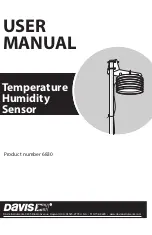
13.4.8
Effect of PLC Modes and Actions on Ethernet
Global Data
The usual PLC mode for Ethernet Global Data operation is Run with I/O enabled. In that
mode, Ethernet Global Data remains configured and exchanges are both produced and
consumed. If the PLC mode is set to Stop with I/O disabled, the Producer ID remains
configured, but production and consumption stops. The samples of the consumed
exchanges received while the PLC is stopped continue to be processed by the Ethernet
interface. The latest received data from the network will be available to the application
when the PLC returns to an I/O enabled state.
The table below summarizes what happens to the configuration and operation of Ethernet
Global Data in different PLC modes.
Exchanges continue to be…
PLC Mode or Action
Produced
Consumed
RUN-Outputs Enabled
yes
yes
STOP-I/O Enabled
yes
yes
STOP-I/O Disabled
no
no
†
†
The latest data from the network is available to the application when the PLC
transitions from Stop to Run mode.
13.4.9
EGD Synchronization
Ethernet Global Data attempts to provide the most up-to-date process data, consistent
with the configured schedule. The Ethernet interface maintains a timer for each produced
exchange. When the timer for the exchange expires, the Ethernet interface requests that
the data for the exchange be transferred from reference memory during the output scan
portion of the next CPU sweep. Once the data has been transferred by the CPU sweep, the
Ethernet interface immediately formulates a sample and transfers the sample on the
network. As soon as a sample for a consumed exchange is received, it is transferred to the
CPU during the next input scan portion of the CPU sweep.
The result of this scheduling method for Ethernet Global Data is a variability of up to one
producer CPU sweep time in the interval between samples produced on the network. This
variability in the time between samples is present to assure that the most up-to-date data is
being transferred.
In general, it is not useful or necessary to configure the production period to be less than
the CPU sweep time. If the producer period for an exchange is set lower than the CPU
sweep time, the Ethernet interface will send a “stale” sample (a sample containing the
same data as previously sent) at the configured interval. When the fresh CPU data
becomes available at the end of the sweep, the Ethernet interface will immediately send
another sample with the fresh data. The timer of the produced exchange is not reset when
this sample is sent. This can result in more samples in the network than would be
expected from the configured period.
Ethernet Communications
GFK-1503E User Manual 259
For public disclosure
Summary of Contents for VersaMax PLC
Page 16: ...Notes 16 GFK 1503E VersaMax PLC User Manual For public disclosure ...
Page 38: ...Notes 38 GFK 1503E VersaMax PLC User Manual For public disclosure ...
Page 50: ...Notes 50 GFK 1503E VersaMax PLC User Manual For public disclosure ...
Page 92: ...Notes 92 GFK 1503E VersaMax PLC User Manual For public disclosure ...
Page 112: ...Notes 112 GFK 1503E VersaMax PLC User Manual For public disclosure ...
Page 224: ...Notes 224 GFK 1503E VersaMax PLC User Manual For public disclosure ...
Page 292: ...Notes 292 GFK 1503E VersaMax PLC User Manual For public disclosure ...
Page 316: ...Notes 316 GFK 1503E VersaMax PLC User Manual For public disclosure ...
Page 317: ......
















































